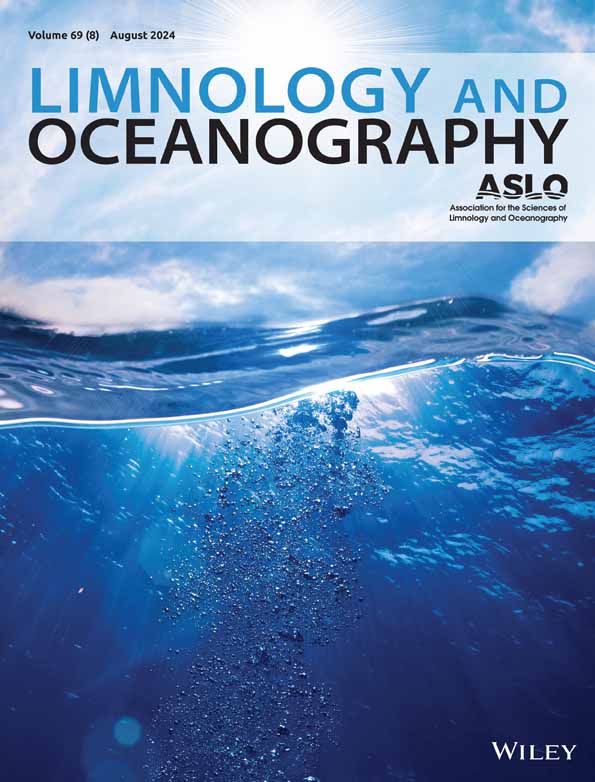气候变化情景对本土大型植物物种入侵的影响有不同的调节作用
IF 3.7
1区 地球科学
Q1 LIMNOLOGY
引用次数: 0
摘要
生物入侵和气候变化威胁着淡水生态系统,并可能通过相互作用放大它们的影响。然而,关于未来气候情景如何影响入侵过程及其对本地物种的相互作用的经验证据仍然有限。我们进行了一项全因子实验,以评估水螅入侵和未来气候情景(基线、缓解和商业照常)对本土大型植物卡彭巴(Cabomba carolina)的独立和交互影响。我们还评估了非本地H. verticillata对这些气候情景的响应。在气候变化减缓情景下,H. verticillata的垂直生长和通过无性繁殖体的定殖潜力与基线条件相当,从而保持了H. verticillata的入侵潜力。同时,缓解情景支持卡罗莱纳树垂直生长和产量,其水平与基线下的水平相似。在正常情况下,H. verticillata通过无性繁殖体表现出增强的垂直生长和定植能力。有趣的是,在“一切照旧”的情况下,其存在与本地物种垂直产量的增加有关。虽然入侵似乎缓冲了极端气候胁迫的不利影响,但它只是使卡罗莱纳州的垂直产量恢复到基线和缓解水平,而不是提供长期优势。我们的研究结果强调了减缓气候变化的生态效益,以及入侵与本土物种未来气候情景之间相互作用所产生的复杂结果。本文章由计算机程序翻译,如有差异,请以英文原文为准。
Climate change scenarios differentially modulate the impact of invasion in a native macrophyte species
Biological invasion and climate change threaten freshwater ecosystems, potentially amplifying their impacts through interaction. However, empirical evidence on how future climate scenarios influence the invasion process and their interactive effects on native species remains limited. We conducted a full‐factorial experiment to evaluate the independent and interactive effects of Hydrilla verticillata invasion and future climate scenarios (baseline, mitigation, and business‐as‐usual) on the native macrophyte Cabomba caroliniana . We also assessed the response of the non‐native H. verticillata to these climate scenarios. The climate change mitigation scenario maintained the invasive potential of H. verticillata , as indicated by its vertical growth and colonization potential via vegetative propagules, which were comparable to baseline conditions. Simultaneously, the mitigation scenario supported the vertical growth and production of C. caroliniana at levels similar to those under the baseline. Under the business‐as‐usual scenario, H. verticillata exhibited enhanced vertical growth and colonization capacity via vegetative propagules. Interestingly, its presence under the business‐as‐usual scenario was associated with increased vertical production of the native species. Although invasion appeared to buffer the adverse effects of extreme climatic stress, it merely enabled C. caroliniana to recover vertical production to baseline and mitigation levels, rather than providing a long‐term advantage. Our findings highlight the ecological benefits of climate change mitigation and the complex outcomes arising from the interaction between invasion and future climate scenarios for native species.
求助全文
通过发布文献求助,成功后即可免费获取论文全文。
去求助
来源期刊

Limnology and Oceanography
地学-海洋学
CiteScore
8.80
自引率
6.70%
发文量
254
审稿时长
3 months
期刊介绍:
Limnology and Oceanography (L&O; print ISSN 0024-3590, online ISSN 1939-5590) publishes original articles, including scholarly reviews, about all aspects of limnology and oceanography. The journal''s unifying theme is the understanding of aquatic systems. Submissions are judged on the originality of their data, interpretations, and ideas, and on the degree to which they can be generalized beyond the particular aquatic system examined. Laboratory and modeling studies must demonstrate relevance to field environments; typically this means that they are bolstered by substantial "real-world" data. Few purely theoretical or purely empirical papers are accepted for review.
 求助内容:
求助内容: 应助结果提醒方式:
应助结果提醒方式:


